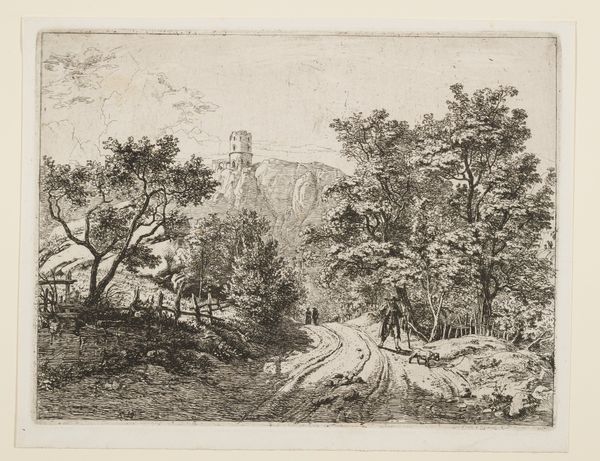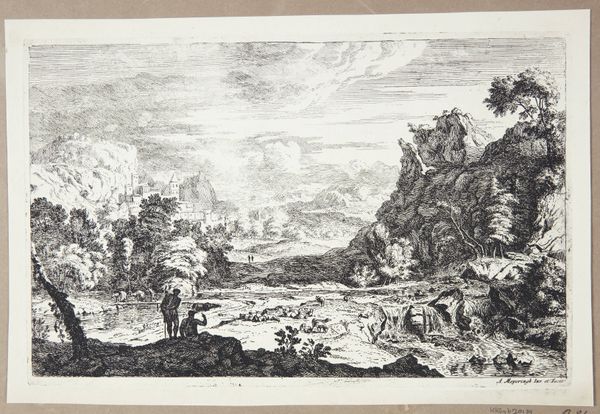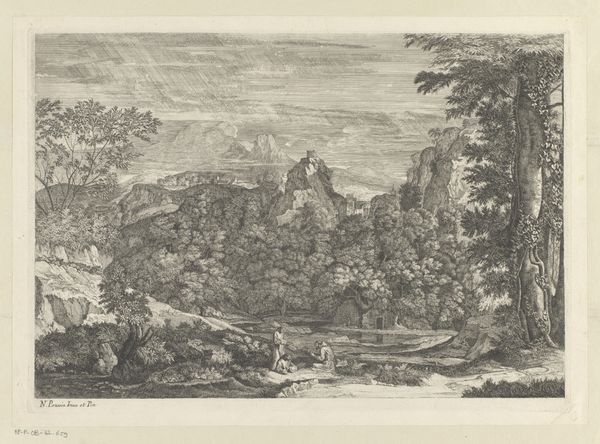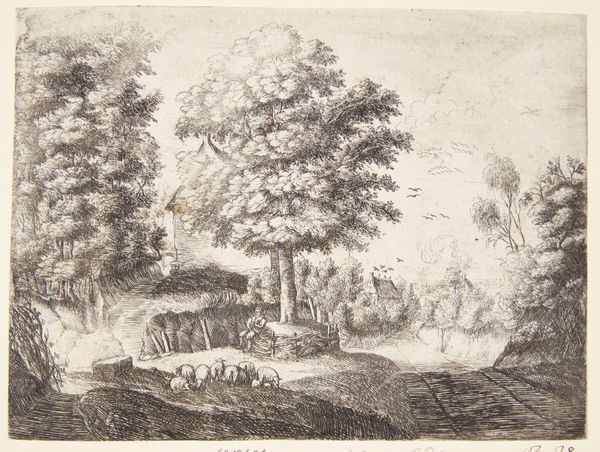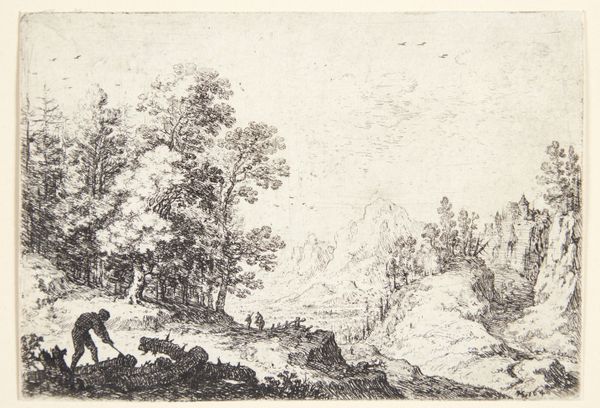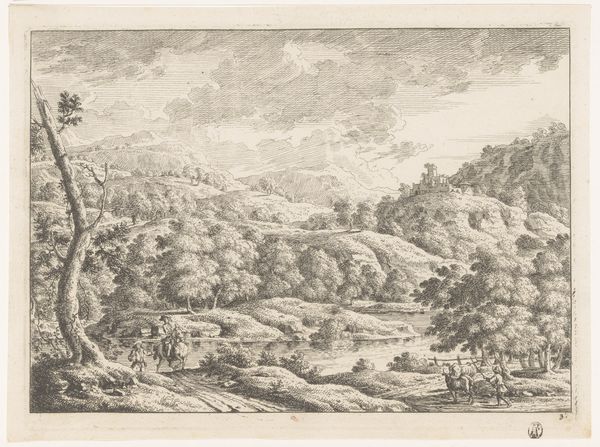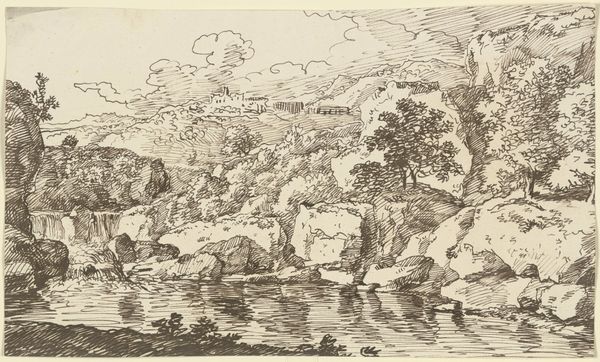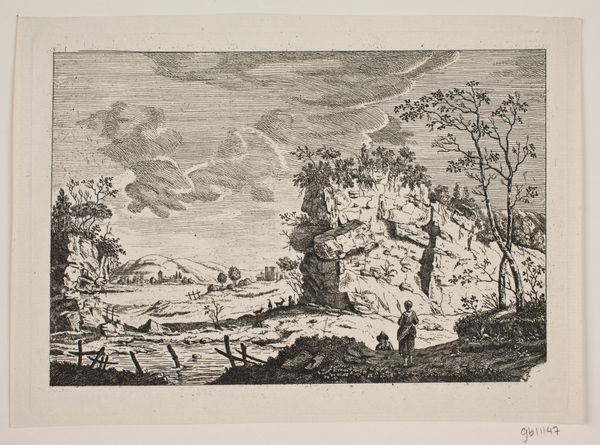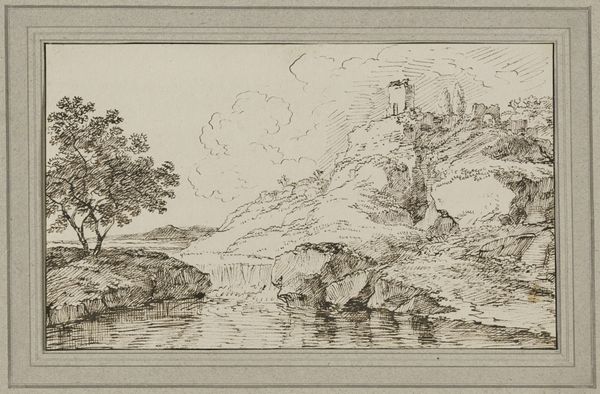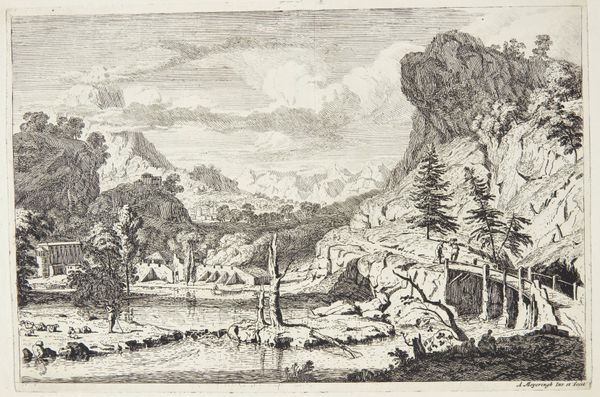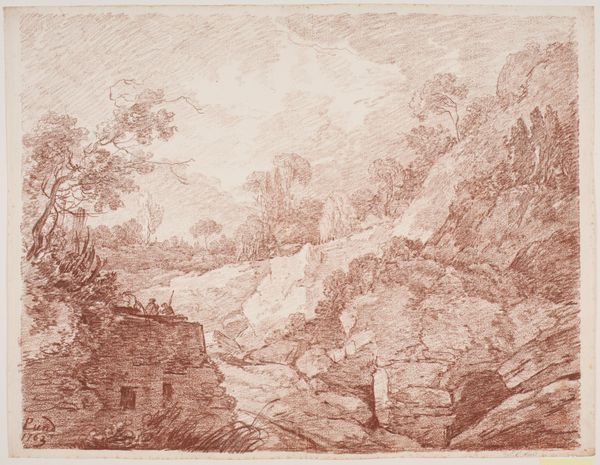
drawing, print, etching, ink
#
drawing
#
baroque
#
dutch-golden-age
# print
#
etching
#
landscape
#
etching
#
ink
Dimensions: 90 mm (height) x 134 mm (width) (plademaal)
Editor: So, this is "Hytte med et forfaldent hegn" by Allaert van Everdingen, made sometime between 1621 and 1675. It's an etching, fairly small, with a rather intriguing depiction of a rural scene. I am initially struck by the composition; the way he's balanced the ruined building on the left with the run-down fence and hut on the right. What is your read of this image? Curator: I see a complex visual commentary on the societal shifts of the Dutch Golden Age. It's important to remember that while this era is celebrated for its prosperity and artistic flourishing, it was also a time of significant social stratification. Everdingen is juxtaposing images of the crumbling ruins of the past – a possible comment on feudal structures - with this rustic, almost temporary, hut and dilapidated fence. The print then subtly questions the stability of the present prosperity against the backdrop of change. How do you see the figures fitting into that analysis? Editor: I see them as just part of the landscape, really, almost incidental. Maybe even representative of itinerants travelling the landscape as a daily necessity for food and shelter. Curator: Perhaps. But it's vital to ask ourselves *who* controlled the production and consumption of these images, no? This wasn't art for the peasantry. These landscapes found an eager audience among the rising merchant class in Amsterdam, and offered them a carefully-distilled and palatable vision of a rapidly changing countryside. Were those who travelled along the track as incidental to this scenery in life as they are portrayed within the drawing? I question to what extent it romanticises the landscape. Editor: That’s a really interesting point about the intended audience and how the image might be consumed. It adds a new dimension. Curator: Exactly! Art doesn't exist in a vacuum, and even landscape becomes deeply political when you consider its public role and how it circulated at the time. Editor: This gives me a whole new appreciation for it. Thanks! Curator: It has been an absolute pleasure!
Comments
No comments
Be the first to comment and join the conversation on the ultimate creative platform.

